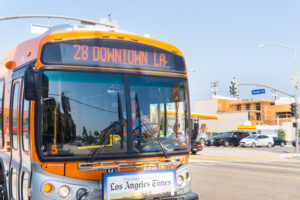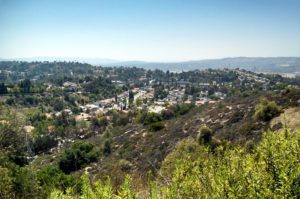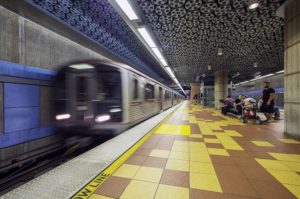
Addressing Long Commute Times along the Slauson Corridor
In 2018, the city of Los Angeles received a grant to develop a neighborhood-level climate resiliency plan for South Los Angeles. Working with community-based organizations
Variable Definitions:
Average Commute Time**: The average time (in minutes) it takes for workers to get to work
Commute Time Above 30 Minutes: The percent of workers who have a commute time of half an hour or greater
Commute Time Above 1 Hour: The percent of workers who have a commute time of an hour or greater
Source:
1990 & 2000: Decennial Census (accessed through Social Explorer)
2010 Onward: American Community Survey, 5-year estimates, Table S0801
Years Available*:
1990, 2000, 2010 – 2023
*Note: Each year of available data shown above is a 5-year estimate, or an average of data collected over a five year period. 5-year estimates are used to increase the reliability of the data at small geographies like neighborhoods and census tracts. The years shown on the NDSC map represent the final year of the five year average (e.g. “2010” represents 2006-2010 data, “2011” represents 2007-2011 data, and so on). For the most impactful comparison of data over time, the ACS recommends comparing non-overlapping years (e.g. 2010-14 with 2015-19).
**Average Commute Time is not available for the years 1990 and 2000.
In recent years, drivers in Los Angeles spent more time in traffic than almost any other major city in the world. Long commute times have both monetary costs and physical and mental health costs to individuals. Individuals with longer commutes tend to spend more money on gas and have less time for other leisure or work activities. Traffic and long commutes may cause stress and adverse health effects from remaining sedentary throughout a commute. Long commute times may also be a barrier to employment for families who cannot afford childcare or gas and vehicle expenses.
On a neighborhood level, longer commute times could indicate a lack of access to local employment and suggest that residents are not being adequately served by or integrated with the local economy. As the metropolitan Los Angeles area has continued to grow in sprawl, some are forced to live further and further away from economic centers in order to afford housing.
Citation:
“INRIX 2015 Traffic Scorecard Sets Benchmark for U.S. Cities as Federal Government Accelerates Smart City Spending.” INRIX, 15 March 2016. Link.

In 2018, the city of Los Angeles received a grant to develop a neighborhood-level climate resiliency plan for South Los Angeles. Working with community-based organizations

Access to cost effective, time efficient and environmentally conscious transportation is a pressing issue affecting people around the world. In 2017, INRIX Global Traffic Scorecard

Across Los Angeles County’s vast and sprawling 4,751 square miles, more than 4.5 million commuters walk, bike, drive, rideshare or take public transit to get
